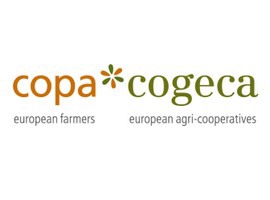The sector's lead European organisations are sounding the alarm: faced with the re-emergence of late blight, European potato production is at risk. That's why the sector's key players are proposing an action plan, presented today in Brussels. Potato late blight is the most destructive disease of potatoes and responsible for the Irish Famine in the 19th century. The annual economic damage in the EU is estimated at around 900 million EUR.
Potato late blight is already a significant threat to the 2024 growing season across several regions of the EU, even before potato planting is completed. The pathogen, Phytophthora infestans, infects both the foliage and tubers of potato plants and can devastate the entire crop within just one or two weeks. This pathogen is highly adaptive, and recent developments show that it is evolving more complex virulence spectra, enabling it to overcome an increasing number of resistance genes. Furthermore, there is an alarming development of combined resistance to single-site fungicide active ingredients.
These troubling developments are drastically reducing the effectiveness of current control tools, potentially undermining future Integrated Pest Management (IPM) strategies. This poses a severe threat to European potato production, the potato supply chain, and the positive EU trade balance.
Against this background, the EU potato sector proposes both short-term and long-term solutions. In the short term, the action plan presented today, proposes among others, the creation of a stakeholder dialogue platform and the reinforcement of communications IPM strategies. In the mid-term, signatories propose developing a coordinated approach from the crop protection sector, breeders, researchers, and European farmers. The most effective way to control the spread of late blight remaining is the combined use of effective plant protection products and resistant potato varieties with combinations of different resistance genes, as well as promoting best agricultural management practices.
The EU action plan also focuses on the need to increase the awareness of EU institutions about the gravity of the situation and the need for swift actions in the coming months.
Background
Potatoes are cultivated on 1.7 % of the EU's arable land, totalling about 1.7 million hectares in the EU. The EU is a net exporter of potatoes, mainly seed potatoes, with a value of 509 million EUR (2020). Beside of fresh consumption, potatoes are processed to be turned into four main types of products: frozen potatoes, dried potatoes, prepared or preserved potatoes, and potato starch. The overall value of EU processed potato production reached 9.1 billion EUR in 2019, equalling 1.6 % of the value of production of the whole European food industry. Frozen chips and crisps were the most significant products in terms of production value. The EU is also a net exporter of processed potatoes, this standing at a value of 3 billion EUR in 2022.
For more information: 
Sarah Lahouegue
Copa and Cogeca
Tel.: +32 474 84 08 36
Email: [email protected]










